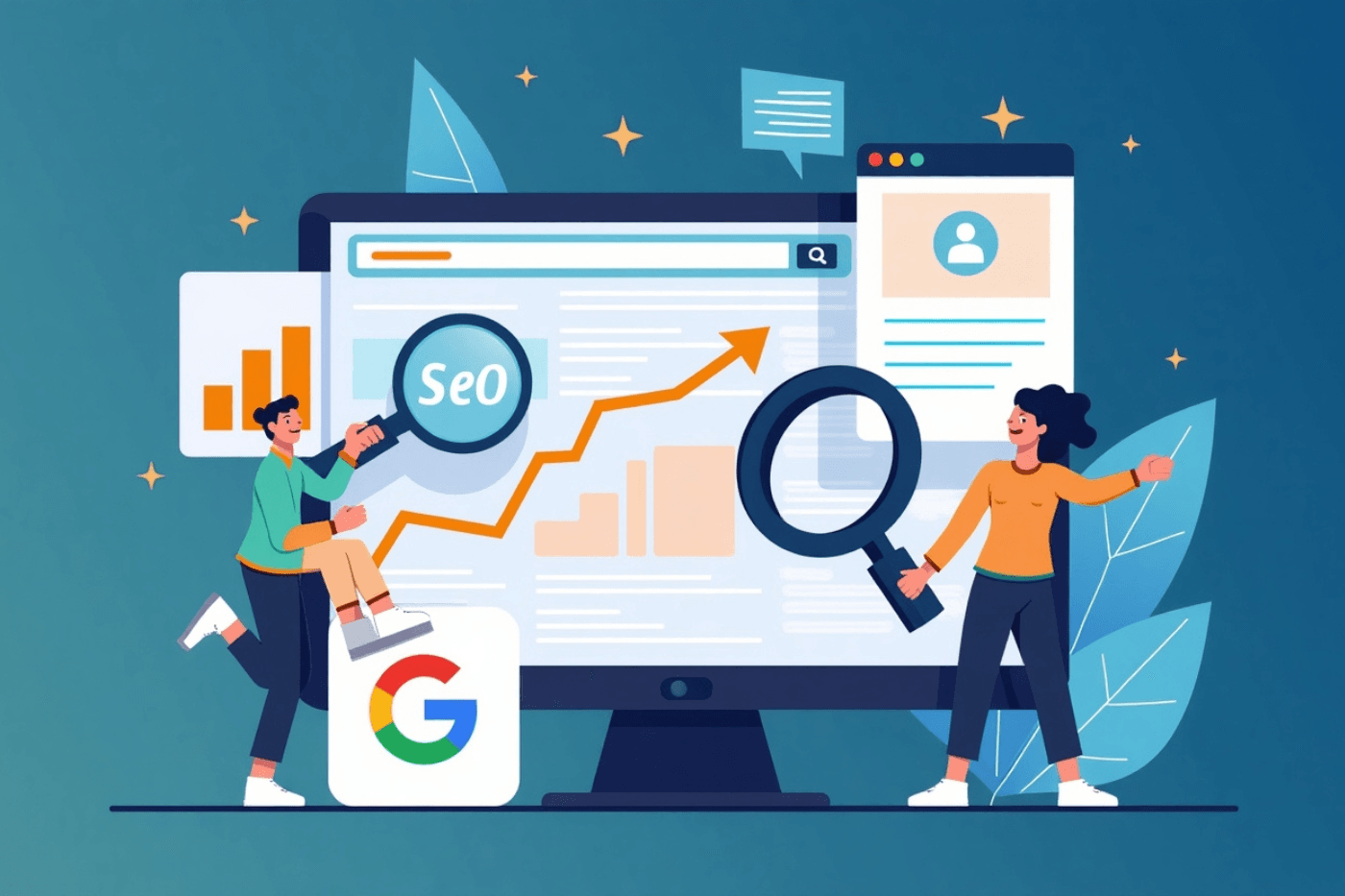
Unleashing Potential: 5 Costly Mistakes to Avoid in Your Facebook Ads Campaign
May 24, 2025
Table of Contents
- Introduction
- Mistake 1: Ignoring Your Target Audience
- 2.1 Lack of Detailed Audience Research
- 2.2 Relying on Broad Targeting Options
- 2.3 Not Utilizing Custom and Lookalike Audiences
- Mistake 2: Flawed Campaign Objectives and Setup
- 3.1 Choosing the Wrong Campaign Objective
- 3.2 Incorrect Bidding Strategies
- 3.3 Neglecting Placement Optimization
- Mistake 3: Uninspiring and Irrelevant Ad Creatives
- 4.1 Generic Visuals and Copy
- 4.2 Lack of Clear Call-to-Actions
- 4.3 Not Testing Different Ad Formats
- Mistake 4: Neglecting Tracking and Measurement
- 5.1 Not Implementing Facebook Pixel Correctly
- 5.2 Failing to Track Key Performance Indicators (KPIs)
- 5.3 Ignoring Conversion Data
- Mistake 5: Lack of Continuous Testing and Optimization
- 6.1 Setting and Forgetting Campaigns
- 6.2 Not A/B Testing Ad Elements
- 6.3 Ignoring Performance Trends
- Conclusion
- FAQs
1. Introduction
In today’s competitive digital landscape, Meta (formerly Facebook) advertising offers an unparalleled opportunity for businesses to connect with their target audience, drive traffic, generate leads, and boost sales. With billions of active users, a well-executed facebook ads campaign can be a game-changer for businesses of all sizes. However, the platform’s complexity also means that it’s easy to stumble into common pitfalls that can drain your budget and yield disappointing results.
As a digital marketing freelancer and the driving force behind Digital Aashutosh, I’ve witnessed firsthand the transformative power of effective Meta advertising. I’ve also seen businesses inadvertently sabotage their campaigns due to easily avoidable errors. This comprehensive guide aims to illuminate these common mistakes, providing you with actionable insights to optimize your facebook ads campaign and unlock its true potential. By understanding and avoiding these pitfalls, you can ensure your advertising spend is an investment that delivers significant returns. Let’s delve into the five crucial mistakes that businesses frequently make and how to steer clear of them.
2. Mistake 1: Ignoring Your Target Audience
One of the most fundamental yet frequently overlooked aspects of a successful facebook ads campaign is a deep understanding of your target audience. Launching ads without a clear picture of who you’re trying to reach is like shooting in the dark – you might hit something, but the chances are slim and costly.
2.1 Lack of Detailed Audience Research
Many businesses make the mistake of assuming they know their audience well enough. However, relying on assumptions can lead to wasted ad spend and irrelevant targeting. Comprehensive audience research goes beyond basic demographics like age and gender. It involves understanding their interests, behaviors, pain points, motivations, online habits, and the content they engage with.
How to Avoid It:
- Conduct thorough market research: Utilize surveys, customer interviews, and analyze your existing customer data to gain deeper insights.
- Leverage Facebook Audience Insights: This powerful tool within Meta Ads Manager provides valuable data on demographics, interests, behaviors, and more for your potential audience.
- Analyze your website and social media analytics: Understand who is already engaging with your brand and what content resonates with them.
2.2 Relying on Broad Targeting Options
While Meta offers broad targeting options based on interests and demographics, relying solely on these can lead to reaching a large but unqualified audience. This dilutes your ad spend and reduces the likelihood of conversions.
How to Avoid It:
- Layer your targeting: Combine different demographic, interest, and behavioral targeting options to narrow down your audience to those most likely to be interested in your offerings.
- Utilize detailed targeting expansion cautiously: While this feature can help reach more people, ensure it aligns with your ideal customer profile and monitor its performance closely.
2.3 Not Utilizing Custom and Lookalike Audiences
Meta’s custom and lookalike audiences are powerful tools that allow you to reach highly relevant users. Custom audiences enable you to target people who have previously interacted with your business (e.g., website visitors, email list subscribers, app users), while lookalike audiences allow you to reach new people who share similar characteristics with your best customers. Ignoring these features is a significant missed opportunity in any facebook ads campaign.
How to Avoid It:
- Create custom audiences: Upload your customer lists, website visitor data, and engage with your Facebook and Instagram pages to build targeted custom audiences.
- Build lookalike audiences: Leverage your best-performing custom audiences to create lookalike audiences and expand your reach to new, highly relevant prospects. Experiment with different lookalike audience sizes (e.g., 1%, 5%, 10%).
3. Mistake 2: Flawed Campaign Objectives and Setup
The foundation of any successful facebook ads campaign lies in selecting the right campaign objective and configuring the campaign settings correctly. Choosing the wrong objective or misconfiguring your ad set can lead to your ads being shown to the wrong people or optimized for the wrong actions, ultimately hindering your results.
3.1 Choosing the Wrong Campaign Objective
Meta offers various campaign objectives aligned with different marketing goals (e.g., awareness, traffic, engagement, leads, app promotion, sales). Selecting an objective that doesn’t align with your primary goal will result in Meta’s algorithm optimizing for the wrong actions. For instance, choosing the “Traffic” objective when your main goal is to generate leads will likely result in more website visits but fewer actual leads.
How to Avoid It:
- Clearly define your marketing goals: What do you want to achieve with this specific facebook ads campaign? Is it brand awareness, website traffic, lead generation, sales, or something else?
- Select the campaign objective that directly aligns with your goals: Carefully review the descriptions of each objective in Meta Ads Manager and choose the one that best suits your desired outcome.
3.2 Incorrect Bidding Strategies
Meta offers various bidding strategies that control how your budget is spent and how aggressively the platform tries to achieve your desired results. Choosing the wrong bidding strategy can lead to overspending, missed opportunities, or inefficient delivery of your ads.
How to Avoid It:
- Understand the different bidding strategies: Familiarize yourself with options like lowest cost, cost per result goal, value optimization, and manual bidding.
- Align your bidding strategy with your campaign objective and budget: Consider your goals, budget constraints, and the maturity of your campaign when selecting a bidding strategy. For example, “lowest cost” might be suitable for maximizing results within a budget, while “cost per result goal” allows you to set a target cost per conversion.
- Monitor your bidding performance: Regularly review your cost per result and adjust your bidding strategy as needed to optimize for efficiency.
3.3 Neglecting Placement Optimization
Meta allows you to choose where your ads are displayed across its network (Facebook Feed, Instagram Feed, Audience Network, Messenger, etc.). While automatic placements can be convenient, they might not always be the most effective for your specific audience and ad creatives. Neglecting to optimize placements can lead to wasted impressions on less relevant platforms.
How to Avoid It:
- Analyze your audience behavior: Understand where your target audience spends most of their time on the Meta platforms.
- Customize your placements: Manually select the placements that are most likely to reach your target audience effectively.
- Monitor placement performance: Track which placements are delivering the best results and adjust your selections accordingly. You might find that Instagram Stories perform better for your brand than Facebook’s right column, for example.
4. Mistake 3: Uninspiring and Irrelevant Ad Creatives
Even with precise targeting and a well-structured campaign, your facebook ads campaign will fall flat if your ad creatives (images, videos, and ad copy) fail to capture attention and resonate with your audience. Generic, unengaging, or irrelevant ads will be quickly scrolled past, leading to low click-through rates (CTR) and wasted ad spend.
4.1 Generic Visuals and Copy
In a visually saturated environment like social media, generic stock photos or bland ad copy simply won’t cut it. Your ads need to be visually appealing, attention-grabbing, and clearly communicate your value proposition.
How to Avoid It:
- Use high-quality, visually appealing images and videos: Invest in professional photography or videography, or utilize eye-catching graphics that align with your brand identity.
- Craft compelling and concise ad copy: Highlight the benefits of your product or service, address your audience’s pain points, and use persuasive language.
- Ensure relevance: Your ad creatives must be directly relevant to your target audience and the offer you’re promoting.
4.2 Lack of Clear Call-to-Actions
Your ad creative should clearly tell users what you want them to do next. Without a strong and explicit call-to-action (CTA), users might see your ad but not know how to proceed.
How to Avoid It:
- Use clear and action-oriented CTAs: Employ phrases like “Shop Now,” “Learn More,” “Sign Up,” “Download Now,” or “Contact Us.”
- Make your CTA visually prominent: Ensure your CTA button or text stands out within your ad creative.
- Align your CTA with your campaign objective: If your objective is to drive website traffic, your CTA should clearly indicate that (e.g., “Visit Website”).
4.3 Not Testing Different Ad Formats
Meta offers a variety of ad formats, including single image ads, video ads, carousel ads, collection ads, and more. Limiting yourself to just one or two formats might mean you’re missing out on formats that could resonate better with your audience.
How to Avoid It:
- Experiment with different ad formats: Test various formats to see which ones perform best for your specific goals and audience.
- Tailor your creatives to the specific format: Ensure your visuals and copy are optimized for the format you’re using (e.g., vertical videos for Stories).
5. Mistake 4: Neglecting Tracking and Measurement
Running a facebook ads campaign without proper tracking and measurement is like driving without a dashboard – you have no idea if you’re heading in the right direction or if you’re wasting fuel. Without tracking key metrics, you can’t identify what’s working and what’s not, making optimization impossible.
5.1 Not Implementing Facebook Pixel Correctly
The Facebook Pixel is a crucial piece of code that allows you to track website events (e.g., page views, purchases, leads) and attribute them to your Facebook ads. Incorrect or missing pixel implementation means you’re losing valuable data that could inform your targeting, optimization, and retargeting efforts.
How to Avoid It:
- Ensure the Facebook Pixel is installed correctly on your website: Verify the pixel’s status using the Facebook Pixel Helper Chrome extension.
- Set up standard and custom events: Track the specific actions that are important for your business goals (e.g., adding to cart, initiating checkout, submitting a form).
- Verify event tracking: Ensure that the events are firing correctly when users take the desired actions on your website.
5.2 Failing to Track Key Performance Indicators (KPIs)
Simply running ads isn’t enough; you need to track the right Key Performance Indicators (KPIs) to gauge the success of your facebook ads campaign. Ignoring relevant metrics means you’re operating in the dark and can’t make data-driven decisions.
How to Avoid It:
- Identify your key performance indicators: Determine which metrics are most important for measuring your campaign’s success based on your objectives (e.g., reach, impressions, CTR, cost per click (CPC), cost per acquisition (CPA), return on ad spend (ROAS)).
- Regularly monitor your KPIs: Keep a close eye on your campaign performance within Meta Ads Manager.
- Utilize reporting features: Leverage Meta Ads Manager’s reporting tools to analyze your data and identify trends.
5.3 Ignoring Conversion Data
Ultimately, the success of many facebook ads campaigns is measured by conversions (e.g., sales, leads, sign-ups). Ignoring conversion data means you’re not understanding the true impact of your ads on your business goals.
How to Avoid It:
- Track conversions accurately: Ensure your Facebook Pixel and event tracking are set up to accurately record conversions.
- Analyze conversion rates and cost per conversion: Understand how efficiently your ads are driving desired actions.
- Attribute conversions to specific campaigns, ad sets, and ads: Identify which elements of your campaign are contributing most to your conversion goals.
6. Mistake 5: Lack of Continuous Testing and Optimization
The Meta advertising landscape is constantly evolving, and what works today might not work tomorrow. Treating your facebook ads campaign as a “set it and forget it” endeavor is a surefire way to see performance decline over time. Continuous testing and optimization are essential for maximizing your results.
6.1 Setting and Forgetting Campaigns
Launching a campaign and then neglecting it without regular monitoring and adjustments is a common mistake. Performance can fluctuate due to audience fatigue, changes in the competitive landscape, or algorithm updates.
How to Avoid It:
- Establish a regular monitoring schedule: Check your campaign performance daily or at least a few times a week.
- Be prepared to make adjustments: Based on your performance data, be ready to pause underperforming ads, adjust budgets, or refine targeting.
6.2 Not A/B Testing Ad Elements
A/B testing (also known as split testing) involves creating multiple versions of your ads with slight variations (e.g., different headlines, images, CTAs) to see which performs best. Not A/B testing means you’re relying on assumptions rather than data to determine the most effective ad creatives and targeting.
How to Avoid It:
- Identify elements to test: Start by testing one variable at a time (e.g., headline, image, button color).
- Create variations of your ads: Develop different versions of the element you want to test.
- Run your A/B tests and analyze the results: Allow sufficient time for your tests to gather statistically significant data and then identify the winning variations.
- Iterate and continue testing: Once you’ve identified a winner, test other elements to continuously improve your ad performance.
6.3 Ignoring Performance Trends
Analyzing your historical campaign data can reveal valuable insights into what works best for your audience and identify areas for improvement. Ignoring these trends means you’re not learning from your past experiences.
How to Avoid It:
- Regularly review your campaign history: Look for patterns and trends in your performance data over time.
- Identify top-performing audiences, creatives, and placements: Understand what has driven the best results in the past and leverage those insights in future campaigns.
- Analyze underperforming elements: Identify what hasn’t worked well and avoid repeating those mistakes.
7. Conclusion
Mastering facebook ads campaigns requires a strategic approach, meticulous execution, and a commitment to continuous learning and optimization. By understanding and actively avoiding these five common mistakes – ignoring your target audience, flawed campaign objectives and setup, uninspiring ad creatives, neglecting tracking and measurement, and the lack of continuous testing – businesses can significantly improve their advertising effectiveness, maximize their ROI, and unlock the immense potential of the Meta advertising platform. As Digital Aashutosh, I am dedicated to helping businesses like yours navigate the complexities of digital marketing and achieve outstanding results through data-driven strategies and expert execution.
8. FAQs
Q: What is the first thing I should do before launching a facebook ads campaign? A: The first crucial step is to clearly define your marketing objectives and thoroughly research your target audience. Understanding who you want to reach and what you want them to do is fundamental to a successful campaign.
Q: How often should I check my facebook ads campaign performance? A: It’s recommended to monitor your campaign performance daily or at least a few times a week to identify any immediate issues or opportunities for optimization.
Q: What are some key metrics I should track in my facebook ads campaign? A: Key metrics to track include reach, impressions, click-through rate (CTR), cost per click (CPC), cost per acquisition (CPA), and return on ad spend (ROAS), depending on your campaign objectives.
Q: How long should I run an A/B test for my facebook ads? A: The ideal duration for an A/B test depends on your budget, audience size, and the traffic your ads receive. Generally, aim for a test period that allows you to gather statistically significant data, which could range from a few days to a couple of weeks.
Q: What is the Facebook Pixel and why is it important? A: The Facebook Pixel is a snippet of code that you install on your website to track visitor behavior and attribute it to your Facebook ads. It’s crucial for accurate conversion tracking, audience building, and optimizing your campaigns for better results.
- By diligently avoiding these common pitfalls and embracing a data-driven, iterative approach, your facebook ads campaigns can transform from a cost center into a powerful engine for business growth. Let Digital Aashutosh guide you towards unlocking the full potential of Meta advertising.
Previous Post
Recent Posts
Categories

Your trusted partner in achieving digital marketing success through innovative strategies and personalized solutions.


